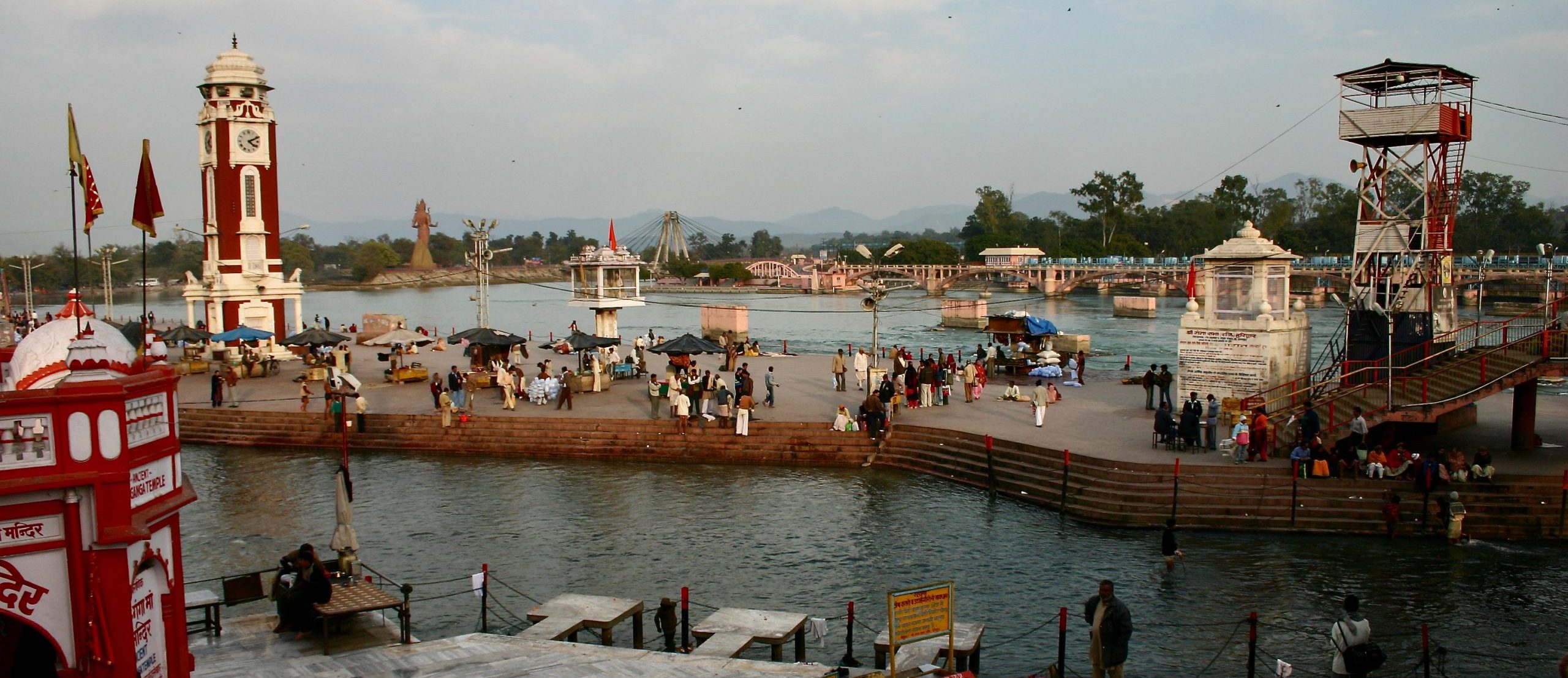UTTARAKHAND
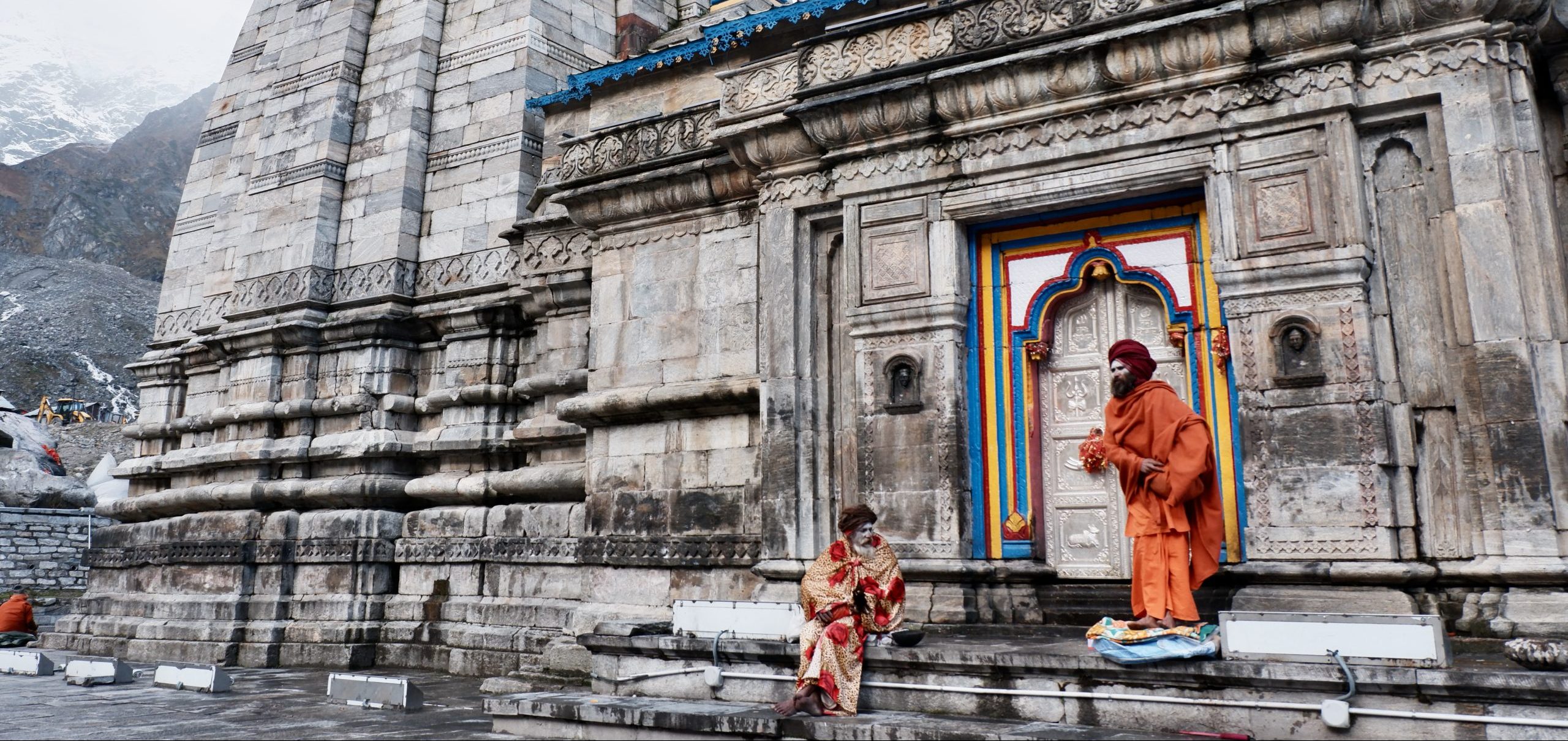
Uttarakhand is a state in northern India that is often overlooked by western travellers. Yet the state, which is about the size of Lower Saxony in Germany, offers a variety of scenic beauty and interesting insights into Hinduism – also known as “Devbhumi” or “Land of the Gods”. The state is divided into two areas: Garhwal in the west and Kumaon in the east. It borders Tibet and Nepal.
Uttarakhand was part of the state of Uttar Pradesh after the creation of India. However, the people in the mountain region were not so enthusiastic about this, they preferred to have their own federal state. There were various groupings and efforts – you can read all about it on Wikipedia. In any case, they were successful and in 2000 the new state of Uttaranchal came into being. On 31.12.2006 it was renamed Uttarakhand. Both names mean “northern region”, Uttarakhand being Sanskrit.
Garhwal is the area more interesting for tourism. Garh is the Hindi word for fort and is often found in Rajasthan, for example. Garhwal is said to have consisted of 52 principalities with forts in the past and that is where it got its name from. Here are the important Hindu pilgrimage destinations.
We quote from Wikipedia: “The region consists almost entirely of rugged mountain ranges running in all directions, separated by narrow valleys, in some cases deep gorges.” Uttarakhand is rich in diverse flora and fauna, including many plants used in Ayurvedic medicine, and protected national parks. Over 65% of the state’s land area is forested. There are protected national parks and a variety of wildlife to observe.
n Uttarakhand, there are about 10 million people, the majority of whom live in rural areas. The main economic sectors are agriculture, tourism and hydropower. Tourism includes pilgrimages as well as hill station tourism. Handicrafts are also still widespread in the state. The population of Uttarakhand is strongly caste-oriented and has a relatively high proportion of Brahmins. In important Hindu places, only vegetarian food is served.
Unfortunately, Uttarakhand is sometimes affected by monsoon rains and associated landslides and floods. Travel is therefore best in the spring and autumn months. In winter, however, you can go to Auli for skiing.
We present below some interesting aspects for a trip to Uttarakhand. We would be happy to provide you with more information about this fascinating region in northern India.
On the road
The start is usually from Delhi. The train only goes a little way up the mountains to Dehradun and Kathgodam or even to Haridwar first (the extension to Rishikesh will be ready soon). After that it is on roads and further up on foot. As you can see from the road network picture in Garhwal, the roads to the important temples are like fingers on a hand, i.e. you have to go back to the palm of your hand each time to go up another finger to the next temple. The road network varies in quality; on some stretches you make good progress, others are muddy tracks. Monsoon damage affects the road condition again and again. Of course, there are also local bus connections – we recommend using them at least once.
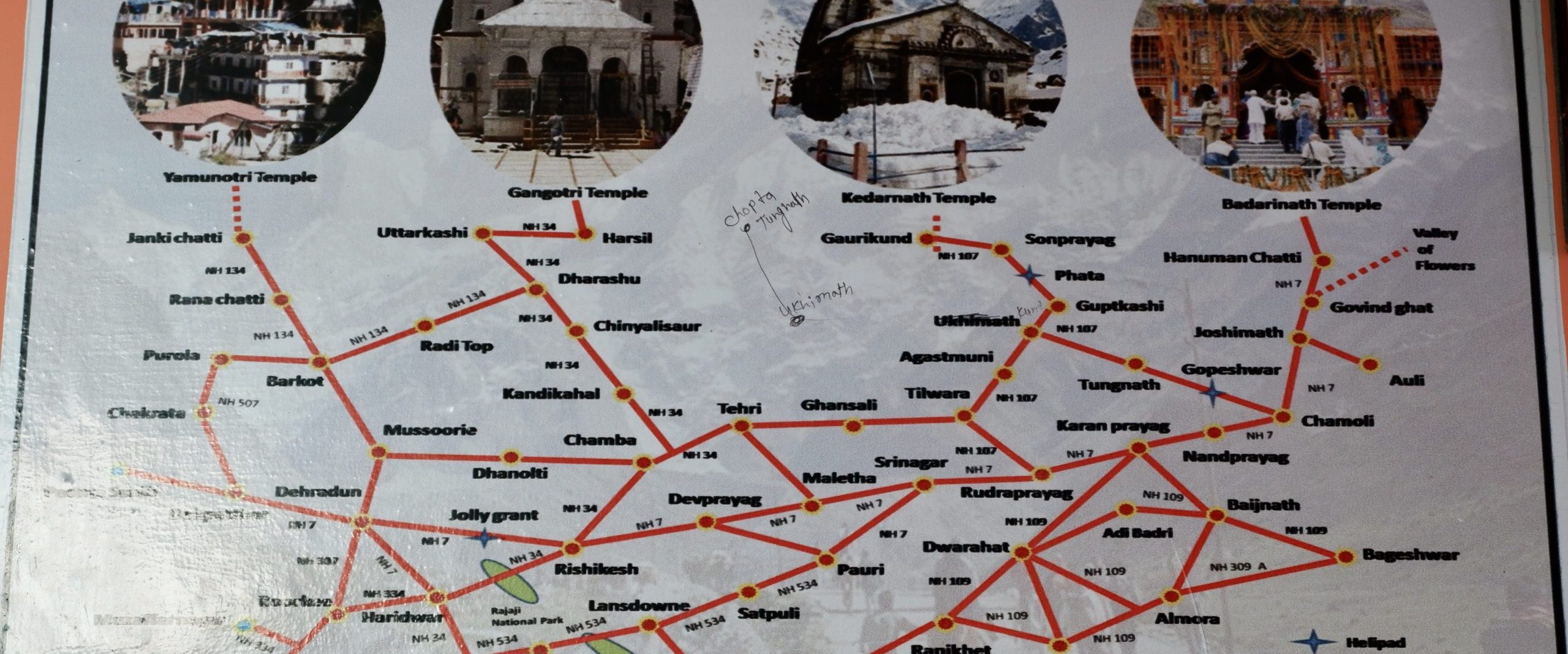
Accommodation
The accommodation on offer in Uttarakhand is large, but often geared towards the Indian pilgrim clientele, i.e. rooms with several beds in simple, sometimes noisy houses. However, it is often possible to find pleasant accommodation, especially in the larger (tourist) towns. Homestays with family connections are rare, but not impossible. A good opportunity for a more intensive village visit. We would be happy to find something suitable for you.
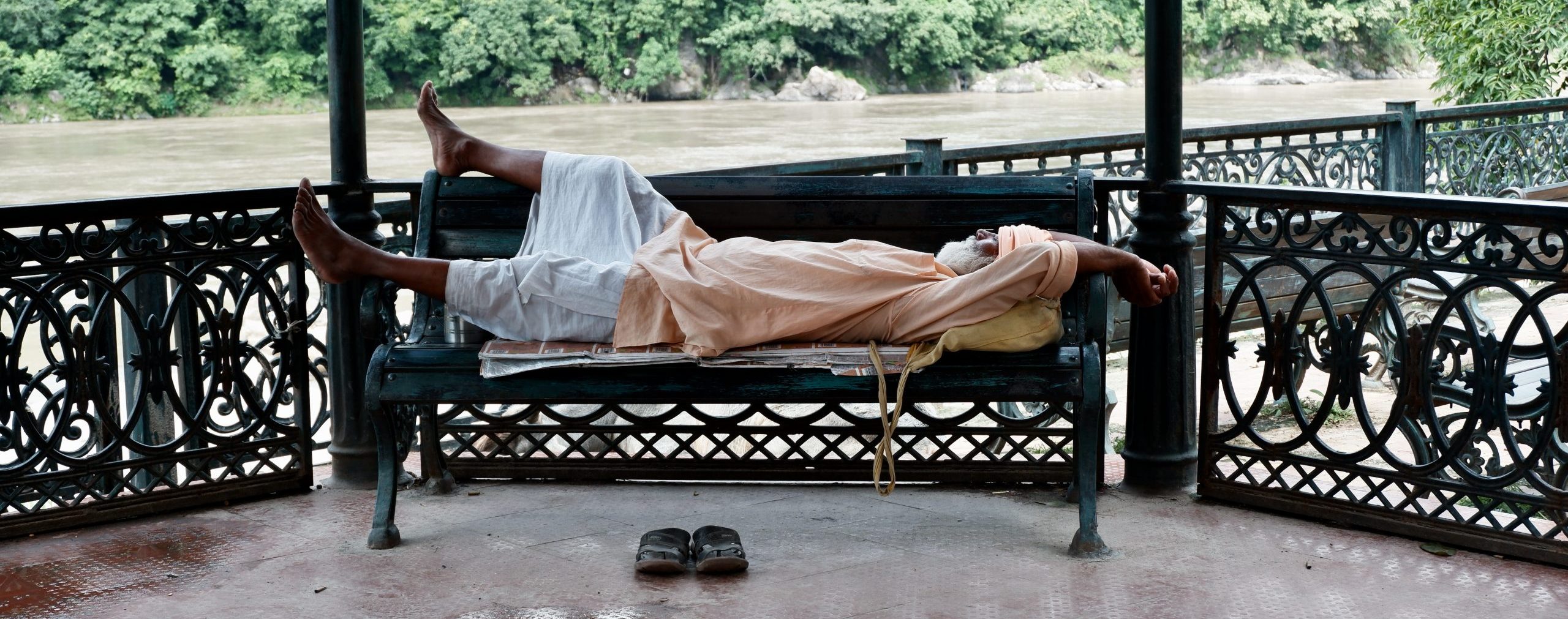
Villages
Like everywhere in India, life in the villages is very different from life in the cities. 70% of the people in Uttarakhand live in rural areas. Here, life is closer to nature, more peaceful, slower and offers good opportunities to get to know people better. In some cases you can stay in homestays and get to know village life even better. What about agriculture and animal husbandry? What is everyday religious life like? Maybe there is a festival going on?
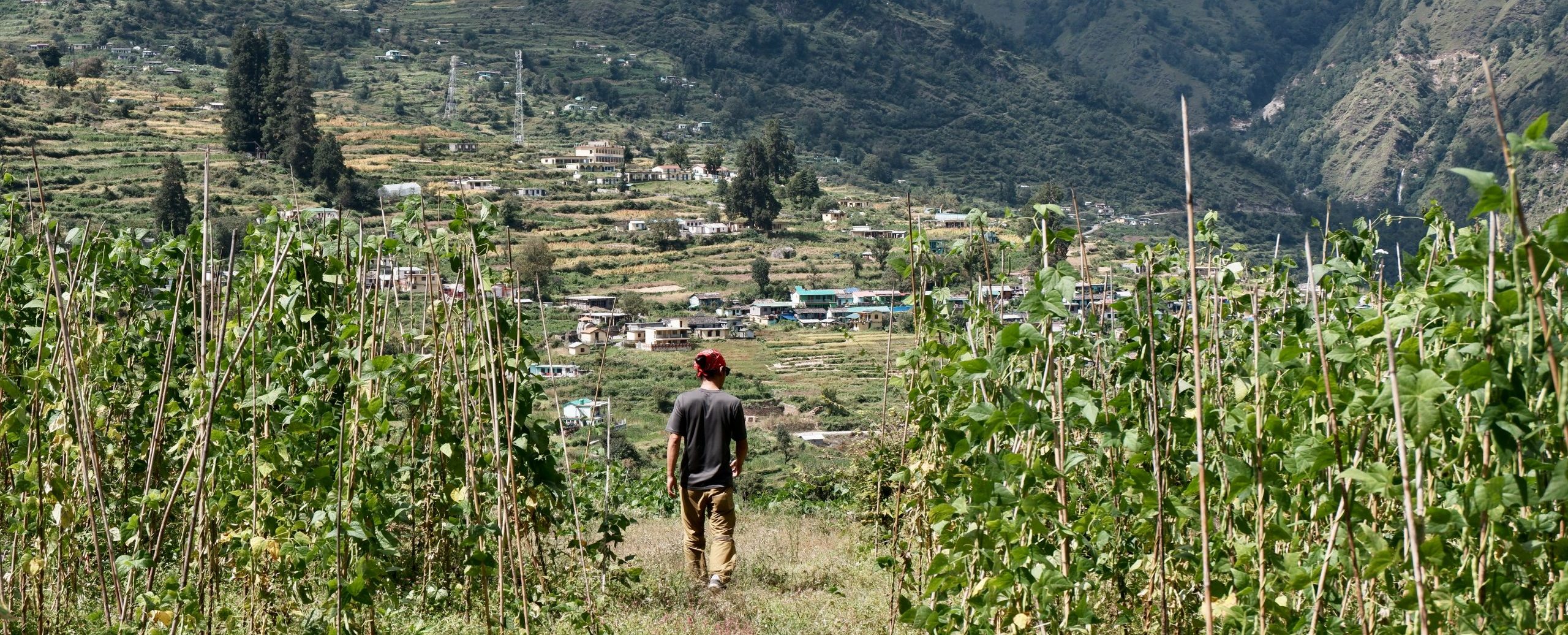
Hinduism
In the Garhwal part of Uttarakhand, you can learn and experience a lot about Hinduism. The Mahabharata, the great Indian epic, was written here and many places are surrounded by stories. A good opportunity to learn more about it. This is also the centre of Indian pilgrimage tourism (see below). Starting from Haridwar and Rishikesh at the foot of the mountains, one meets numerous devotees and small and large temples. In Varanasi, further down the Ganges, Hindu life is concentrated – in Uttarakhand it is spread out in the most beautiful mountain landscape. The headwaters of the Ganges, Alaknanda and Bhagirathi, rise in the mountains and unite in Devprayag, elevating the small town to an important Hindu pilgrimage site with the typical stairs to the holy river cut into the rocky bank.
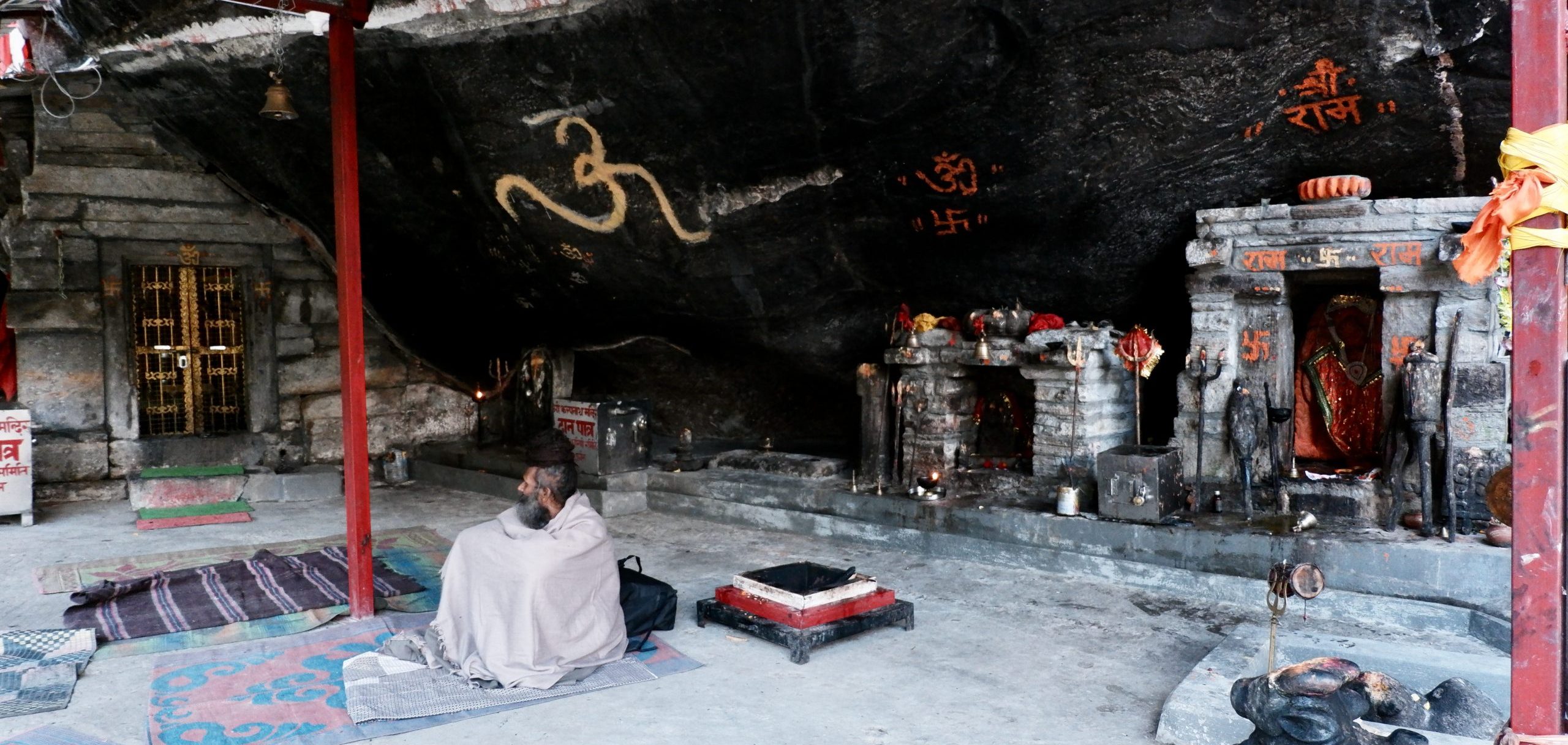
Trekking and Hiking
The Himalayan mountains naturally invite for many small and large mountain tours. There are routes everywhere, from small walks to extended day tours, which we can easily integrate into the tour plan. The tours to the pilgrimage destinations are easy to organise, here you walk or sit on horseback and strive upwards on wide stone paths together with many others. But the enormous mountain landscape can also be hiked off the beaten track – on trekking trails with pack animals, tents and a staff team. A suitable tour can always be chosen from various routes of different length, difficulty, altitude and popularity.
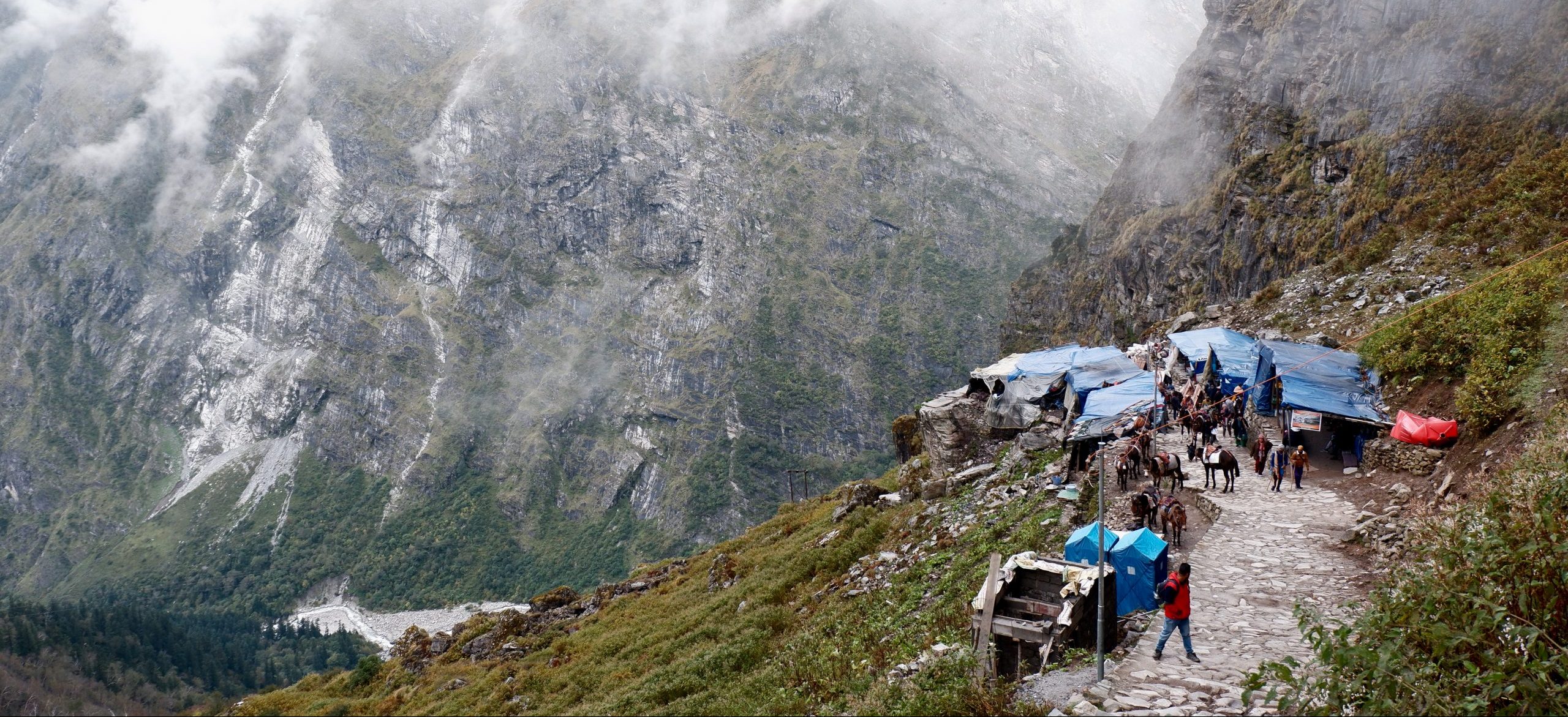
Pilgrimages
The Ganges and Yamuna, the holy rivers, rise in the Garhwal. The area is the cradle of many important Hindu temples and a destination for pilgrims. There are two pilgrimages:
1. Char Dham Yatra: One visits the temples Yamunotri, Gangotri, Kedarnath and Badrinath. The four temples are located at the ends of 4 roads (and to Kedarnath you have to walk another 14 km uphill). You can think of it like the 4 fingers of a hand – you have to keep going back to the palm of your hand to go up from there to the next fingernail.
2. Panch Kedar: Panch = 5 , Kedar = local name for Shiva – and thus you go to 5 temples dedicated to Shiva. You can only get to all these temples on foot, you can cover the 170 km exclusively on foot – or you can drive to the respective starting points and start there. The temples are Kedarnath (so this one is double); Rudranath, Tungnath, Madmaheshwar and Kalpeshwar.
Of course, you can also visit these temples disjointedly and divide it up over several years.
But it is not only the Hindus who go on pilgrimage here; the Sikhs also head for a sacred destination: Hemkund Sahib, the highest Gurudwara. It is beautifully situated on a small lake at an altitude of about 4,160 m and can be reached in a 3-day trip. The atmosphere at the top is very special. The tour can be combined with a detour to the Valley of Flowers.
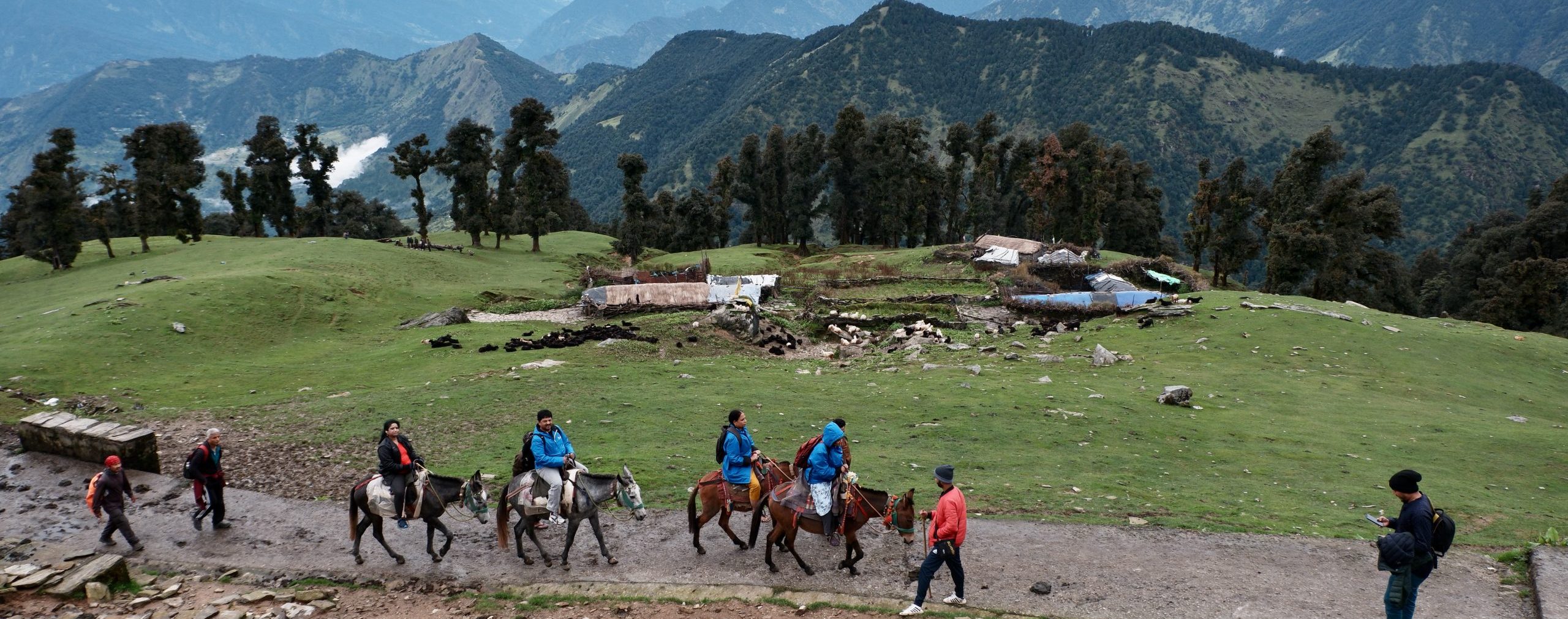
Rishikesh/Haridwar
Haridwar and Rishikesh at the foot of the mountains on the Ganges are very special places for devotees. Haridwar is dominated by Indian visitors who bathe in the Ganges at the ghats and gather in the evening for a communal aarti. Rishikesh also attracts many Westerners who practise yoga in ashrams and seek spirituality. You can spend hours in both places watching the hustle and bustle of the Ganges, but you can also go on excursions in the surrounding area – whether to special temples or natural beauties like waterfalls or small hiking tours.
A pleasant train ride from Delhi promises an interesting and enjoyable stay – either as a starting point for an Uttarakhand trip or just as a short excursion before/after another trip.
